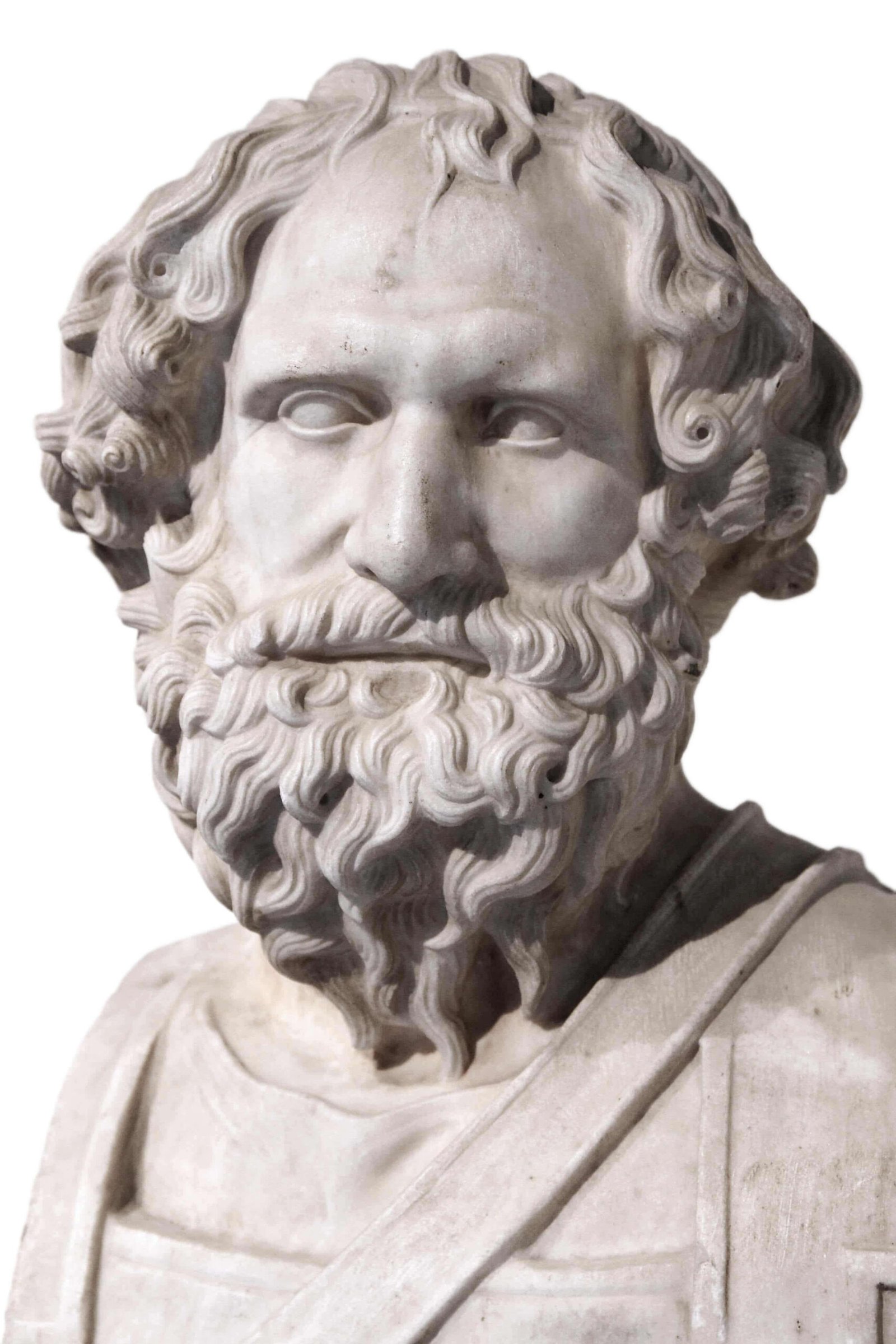Archimedes
Archimedes of Syracuse, one of the most brilliant minds in ancient history, has left an indelible mark on science, mathematics, and engineering. His pioneering work laid the foundations for various scientific principles and inventions that continue to influence our understanding of the world today. In this article, we will explore his life, his significant contributions to mathematics and science, and his lasting legacy, drawing on his biography and inventions.

A statue in the National Archaeological Museum of Naples (Naples, Italy) widely claimed to represent Archimedes.
Key Facts About the Ancient Greek Mathematician and Inventor
Born: Was born around 287 BCE in the city of Syracuse, located on the island of Sicily, which was part of ancient Greece.
Died: Died in 212 BCE during the Roman siege of Syracuse, when a Roman soldier killed him despite orders that he should not be harmed.
Education: Studied in Alexandria, Egypt, a center of learning at the time, where he received advanced education in mathematics and science, profoundly influencing his later work in physics, geometry, and engineering.
Family: Was born into a family with a scientific background. His father, Phidias, was an astronomer, likely influencing him early interest in mathematics and science.
Inventions: Inventions include the Archimedes’ screw, a device for raising water still in use today, and advanced war machines like catapults and a heat ray to defend Syracuse. He also discovered principles such as buoyancy (known as Archimedes’ Principle) and made significant contributions to understanding levers and pulleys, laying foundations in both physics and engineering.
Early Life
Archimedes was born around 287 BCE in the ancient city of Syracuse, located on the eastern coast of Sicily. Syracuse was a significant Greek colony and a vibrant center of culture and commerce during his early years. The city was known for its strategic location and its role as a hub of trade and interaction between different civilizations, including the Greeks, Romans, and Carthaginians.
His father, Phidias, was an astronomer, which likely provided him with a stimulating intellectual environment from an early age. Although not much is documented about Phidias, his profession suggests that he was exposed to scientific thought and inquiry during his formative years. The emphasis on learning and exploration within his family likely ignited his curiosity and passion for understanding the natural world.
Fig: Map of ancient Sicily
Source Link
Influence of Syracuse’s Environment
Syracuse during his time was a politically tumultuous place, with ongoing conflicts and alliances among various city-states and foreign powers. The city was often threatened by external forces, including the Carthaginians. This environment likely influenced him later inventions and innovations in military engineering. His work in creating defensive mechanisms, such as the Archimedes Claw, showcased his practical application of scientific principles to address real-world challenges.
Early Contributions to Science
His early life laid the foundation for his later accomplishments, as he began to apply his mathematical knowledge to solve practical problems. His work in geometry, particularly in calculating areas and volumes, demonstrated his ability to merge theoretical mathematics with practical application. The Archimedean Spiral, one of his notable contributions, exemplifies his early exploration of curves and geometric properties.
Major Contributions
Principle
One of his most celebrated contributions to science is the formulation of Archimedes’ Principle, which states that an object submerged in a fluid experiences an upward buoyant force equal to the fluid’s weight that the object has displaced.. This principle not only laid the groundwork for hydrostatics but also provided practical insights into shipbuilding and fluid mechanics.
The Death Ray
He developed a device known as the Archimedean Death Ray, which supposedly used mirrors to concentrate sunlight onto enemy ships, setting them ablaze. Although the historical accuracy of this account is debated, it reflects his innovative thinking and his ability to conceptualize advanced weaponry.
Mathematical Achievements
Calculating Areas and Volumes
He made significant strides in geometry, particularly in calculating the areas and volumes of various shapes. His method for determining the area of a circle and the volume of a sphere is still taught in mathematics today. He famously approximated the value of pi, demonstrating his mathematical prowess.
Archimedes Spiral
Another fascinating mathematical concept attributed to him is the Archimedean Spiral, a curve that represents a continuous increase in distance from a central point. This spiral has applications in various fields, including physics and engineering.
Physics and Engineering Innovations
Archimedes Claw
He also designed a Claw, a defensive weapon used to protect the city of Syracuse from naval attacks. This ingenious device could lift enemy ships out of the water and capsize them, showcasing his innovative approach to engineering and warfare.
Archimedes Dial
The Archimedes Dial, an ancient astronomical device, demonstrates his contributions to the study of time and celestial bodies. It allowed users to track the position of the sun and stars, furthering our understanding of astronomy.
Historical Context
He lived during a time of great political upheaval and scientific advancement. The Hellenistic period saw the rise of intellectual pursuits, with scholars like Archimedes contributing to fields ranging from mathematics to astronomy. His work laid the foundation for future scientific exploration and was influential in the development of later scientific thought.

